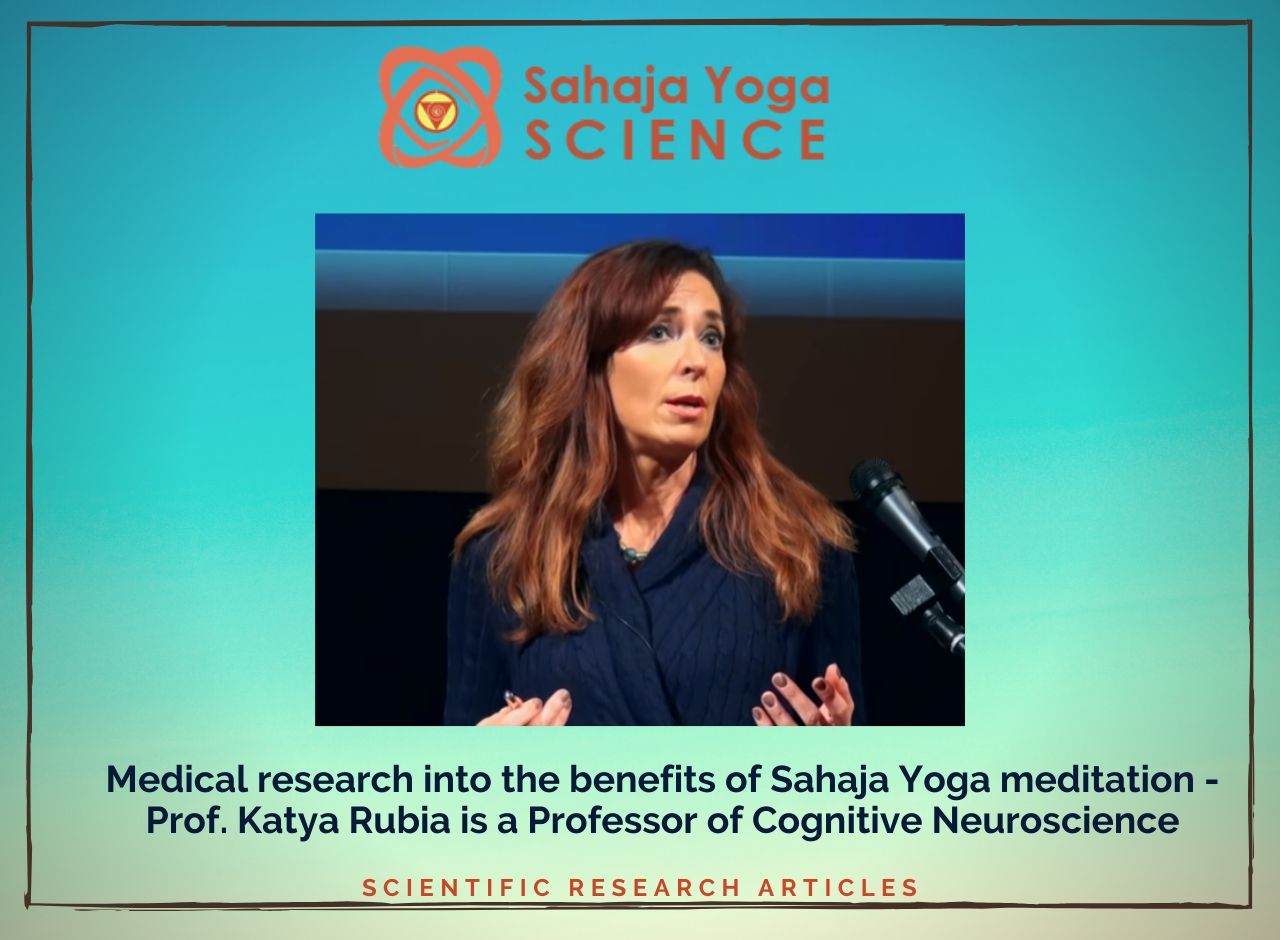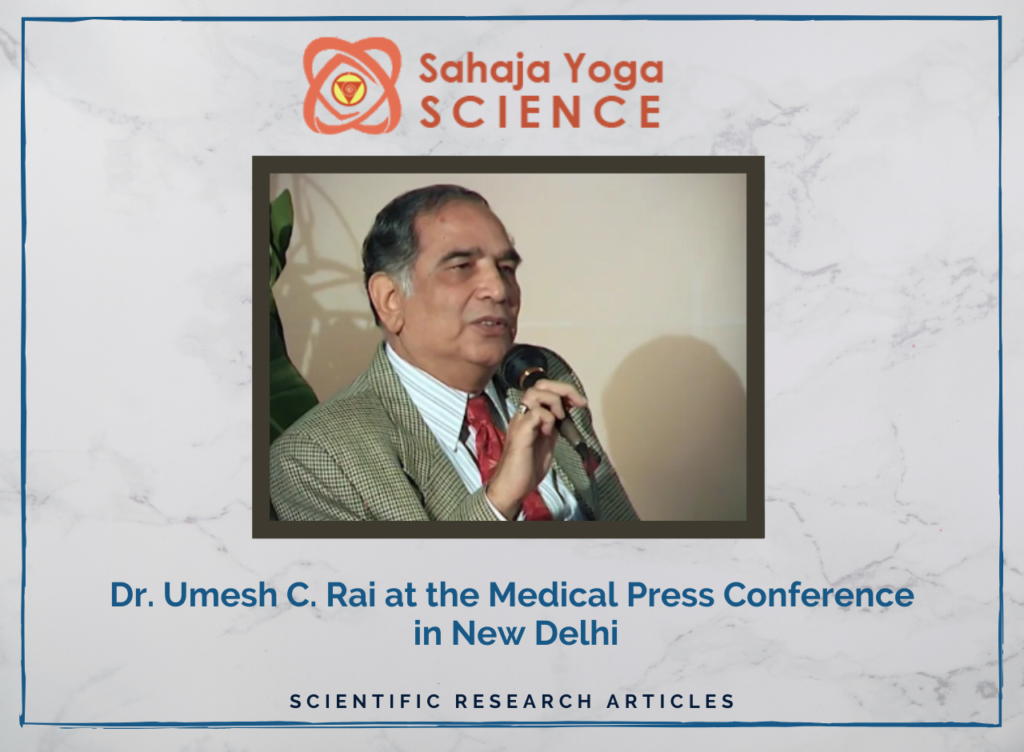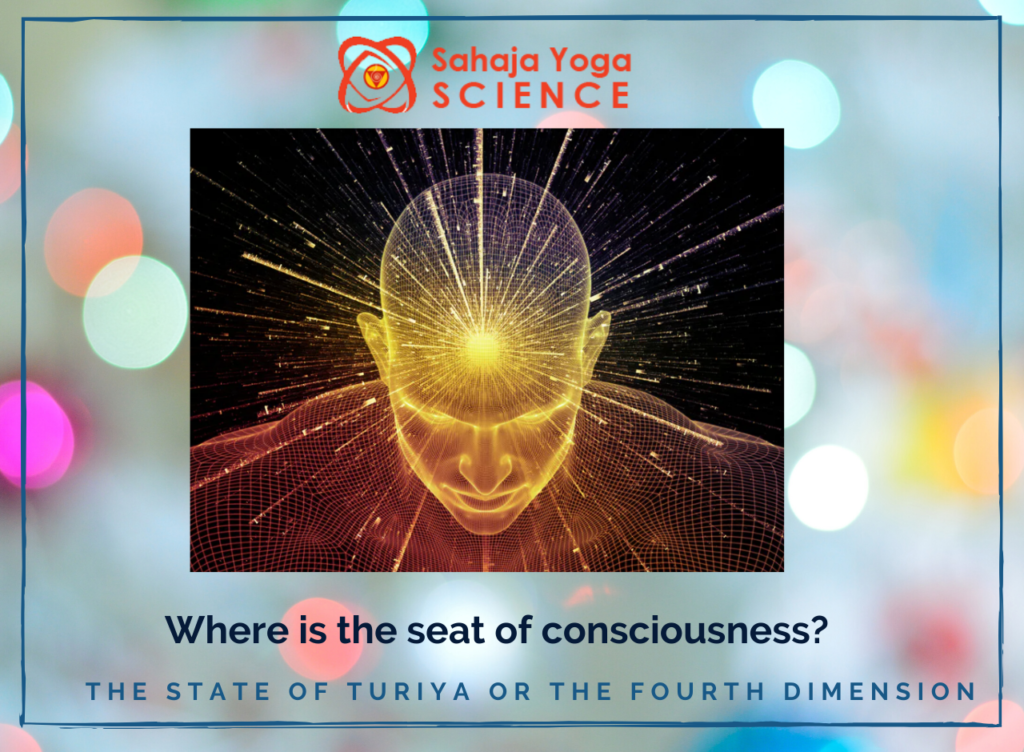This is the first video out of six where Prof. Rubia introduces the research that has been done on the effects of Sahaja Yoga meditation on our brain, body, health and mental and physical diseases. She explains that meditation is a process of stopping our thoughts, which leads to the state of thoughtless awareness or mental silence.
This state has been described in all cultures and mystics by different names such as Yoga, Zen, Tao, Gnosis, etc. Prof. Rubia claims that meditation is beyond normal relaxation because the state of thoughtlessness does not only help you to relax your body, but most importantly your mind; and it also helps you to become more emotionally resilient. Subjectively, this state of mental silence leads to feelings of inner peace, of deep relaxation, of enhanced alertness, joy and detachment.
With meditation you can control your state of mind, your thoughts and your emotions. Scientific research has shown that these subjective experiences during meditation are in fact underpinned by significant effects on the body and the brain that reflect health benefits.
Thus, meditation relaxes the body more deeply than simple relaxation and therefore leads to stress relief. In addition it also leads to better mental balance, better attention and emotional resiience.
In the following videos, Prof. Rubia introduces scientific evidence that Meditation reduces stress by activating the parasympathetic nervous system that restores bodily functions, that Meditation has a measurable effect on the brain by activating attention systems and the limbic system which is important for emotions and that it leads to better physical and mental health.
Learn more about meditation at: http://www.sahajayogalondon.co.uk –
Katya Rubia is a Professor of Cognitive Neuroscience at the Social, Genetic and Developmental Psychiatry (SGDP) Centre and Department of Child and Adolescent Psychiatry, both part of the Institute of Psychiatry, King’s College London. She is best known for her work in child cognitive neuroscience and neuropsychiatry, particularly on disorders of impulsiveness, such as attention-deficit hyperactivity disorder, autism, obsessive-compulsive disorder, and conduct disorder.
She uses techniques such as functional magnetic resonance imaging (fMRI) and neurofeedback. Some of Katya Rubia’s main contributions to the field are that children with ADHD have timing abnormalities and have abnormalities in their brain function relative to healthy peers.
Katya Rubia has over 130 publications in academic journals.





